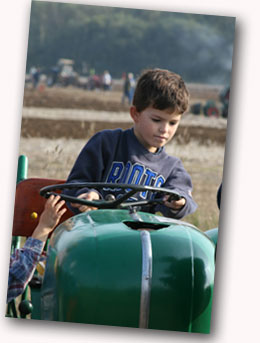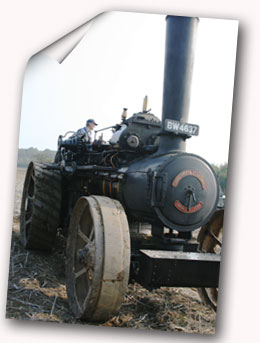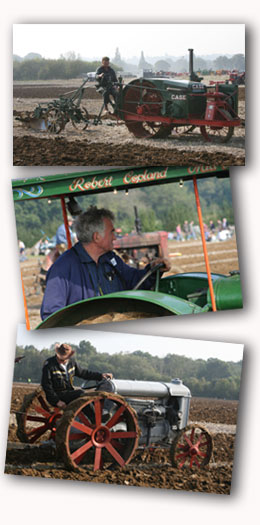
 |
HOME |
The British National Ploughing Championships PART THREE |
|||||
 #9053/06 ©2006 |
Two enormous traction engines sat parallel to each other on opposite sides of a large field and effortlessly hauled a bowler-hatted ploughman backwards and forwards at speed via a cable. Reminiscent of the ground-breaking days when steam transformed industry. |
|||||
|
Today's modern tractors with their huge power and multi-furrow ploughs can achieve in an hour what it takes a pair of horses a day to complete. |
 #9044/06 ©2006 |
|||||
 #9059/06; 9029/06; 9083/06 ©2006 |
The history of ploughing goes back 8,000 years when the Mesopotamians domesticated oxen and used them to pull a scratch-plough which was a simple wooden frame and stick arrangement that scored the earth. It wasn't until the 6th century that heavy wheeled moulded plows appeared in which an arrow-shaped ploughshare cut down into the ground and turned the soil. Adopting the iron plough developed in 14th century Belgium a Briton, Joseph Foljambe, started to produce the first commercial iron plough in 1730. By the 1830s durable and light steel ploughs were the norm. Modern tractor mounted ploughs are reversible allowing furrows to run correctly regardless as to which way across the field the tractor is running. |
|||||
| Suggest a topic for another Wey River photofile |
||||||